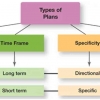Do you know!
literature is an artistic or written work in the field of art.
art of high value and timeless because the work of art can remember through books, novels, poetry to creating the next.
It can be said that literature is written work that uses a special or certain way in producing it.
Literature was created by human hands, Humans can express something in their mind to create good and interesting literary works.
They can bring back real human life, create stories to entertain readers, and so on.
Writers have a purpose when they create literary works. They can be funny stories, tragedies, folk tales, etc. It depends on their agreement.
In creating literary works, the writer or writer must know about how to make good literary work.
They must know how to develop a theme into a good story setting.
Of course, all of these must support the choice of words, settings, plot, point of view, story background, characterization, and messages to be sent to readers.
The intrinsic elements of literature can help understand more about the literary work itself. Without realizing it, when they read one of the literary works, they will try to get what the writer will say.
Therefore, when making essays related to literary works, focus on what the writer hurts, provide an explanation of that idea, and get deeper into the idea of creating literary works.
Students working to write literary analysis to make them aware and well aware of how and why poetry, drama, novel or drama is written. Before analyzing a literature, it must be remembered that the writer has a reason or purpose in creating a literary work.
INTRINSIC ELEMENTS
1. Character
Character is a unique value, both character, morals, or a person's personality which is formed from internalization as a policy that is believed and used as a way of seeing, thinking, also speaking and behaving in everyday life.
a certain combination of qualities in a person or place that is different from the others. The meaning is related to the quality of a person. In a story, the meaning of a character is someone who is represented in the film, drama, or story. Not only in stories but also in everyday life, character development also occurs in everyone as the main character in their daily life. Character development is the change in character from the beginning of the story to the end. Main, third or third character.
Types of characters:
a. The main character
b. Antagonist
c. Minor characters
d. Characterization
the author makes it only to reveal the character's personality, such as appearance, actions, dialogue, etc.
2. The plot
Plot means the story of a film, book, drama, etc. Plot is the sequence in which everything moves and occurs in a story. Plot is the arrangement of ideas and / or orders that make up a story. We can say that a story has a good chronological order only if it relates events to the order in which they occurred. Meanwhile, if the story moves back in time, it is referred to as Flashback. In literary works, whether it is a short story, or a conflict drama that occurs when the protagonist starts having problems or struggles against the antagonist.
Types of plots:
A. Progressive plot: has a central climax followed by denouement.
b. Episodic plot: has one or short episodes linked with the same character or unifying theme (possibly through chapters). Used by writers to explore the characters of the characters, their existence, and the sense of a particular period.
3. Settings
What is meant by setting is the time and place where the action of a book, film, drama, and so on. Authors may develop their ideas to create good literary works. Of course, in this process, the writer will seriously find a suitable setting for their story.
There are six types of arrangements:
a. Setting is where the setting is not important to the story and the story can happen in any setting.
b. Integral arrangement is based on action, character, or theme, time and place setting, setting. Control settings control character.
c. Regulatory function: as a portrait of social life, as a living atmosphere, and as a delivery of information.
d. Arrangement as antagonist: The character must resolve conflicts created by the arrangement
e. Character illuminating settings: Limited settings help characters find themselves and grow as individuals.
f. Arrangement as symbolism: symbols are people, places, objects, situations, or actions that operate on two levels of meaning, literal and figurative, or suggestive. Children will only understand clear symbols.
4. Themes
Themes are the main points of a story or commonly known as main ideas or ideas about something, one of which is in writing. in every article, there must be a theme, because in a writing, what theme will be made. In the case of films or novels, the theme is an idea that conveys what will happen in the literary work, who the actor is, what the actor's condition is, what will be the problem in the literary work, how to solve it, etc. It can be said that the theme is everything that is related to the story from beginning to end. The idea of a theme usually comes from real human life or fiction. Without a theme, the writer or writer cannot create or organize good literary work. .
5. Viewpoints
In terms of point of view, it is determined by the description of the characters, settings, and events that the writer tells the reader throughout the story.
A. Narrator is a person who tells a story whose character is in the story (or there is no character).
b. The first person is the Narrator in a mass action but has limited knowledge / vision.
c. The second person is the Narrator greeting the reader directly as if he or she is a part of the story.
d. Third Person (Objective) is the anonymous / unknown Narrator (separate observer). Does not consider characters and not characters in the story. Narrator reports events and lets give meaning.
6. Style
Gaya is this engineering that is a thing that is not just seen next eye. Based on the story, the style is where the author delivers his writing to the public so that the reader gets something after reading the work. and how the writer can say something, choice of words and language usage, sentence construction, imagery is not what the writer says. This adds meaning and impact to the writer's writing. In literary works, the exposition is the narrator or the third person who provides background information to explain the events of the story. The choice of words and language usage can be seen from the dialogue between characters.


![Steam and Schemes [4]](https://assets-a1.kompasiana.com/statics/2019_kompasiana/desktop/images/headline-blank-vsmall.jpg?t=t&v=100&x=100&info=meta_related)







